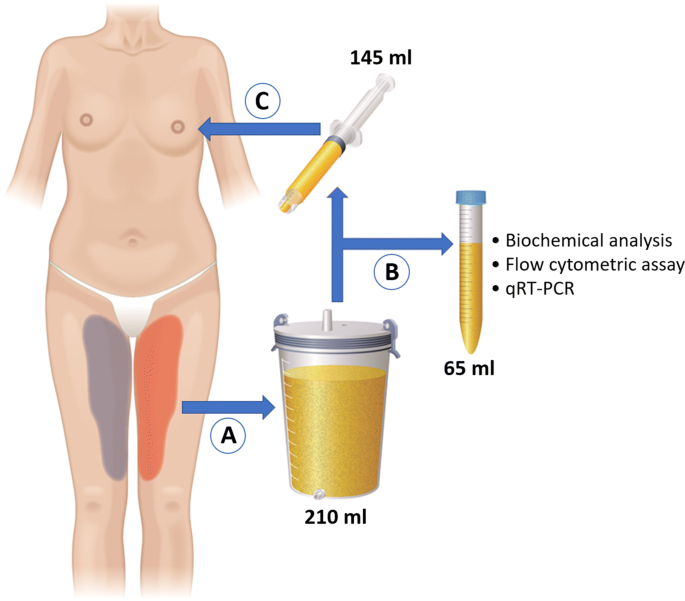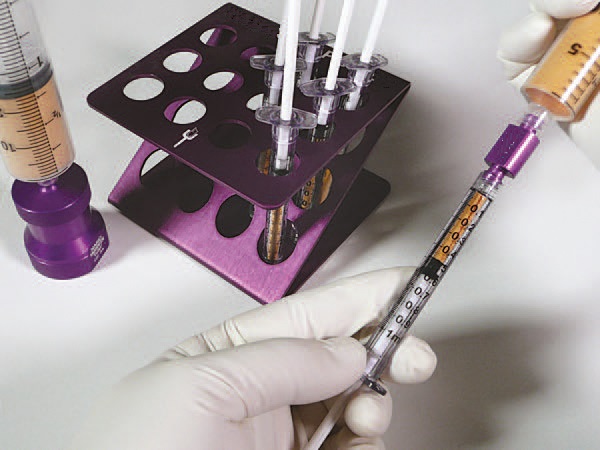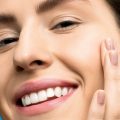Lipofilling & Fat Transfer
Body fat has been widely debated on an emotional, cultural, artistic, socio-economical and medical level. Fat harvesting and transfer from one part of the body to another is known as lipofilling. The fat transfer is a well-practised procedure in our Dublin cosmetic clinic. Its revival is due to recent technical innovations improving fat cell survival through better purification, a process known as nano fat. Fat is usually harvested from areas where its surplus or unwanted and put to good use where it’s needed.
Ageing is responsible for subcutaneous fat tissue loss and diminishing skin elasticity. These defects or deficiencies typically result from the loss of a volume of fat tissue. The harvest and fat transfer lipofilling procedure utilises the patient’s own fat tissue to address or treat other areas in their body. One of the biggest advantages when using your own fat as a filler is eliminating the risk of a foreign body reaction. Fat is readily available in nearly all patients. The lipofilling process carries minimal discomfort to the patient and fat harvesting and transfer process can easily be repeated if necessary.
Excess amounts of fat tissue are found all over the human body, and may easily be obtained through low pressure liposuction. After a couple of steps to enhance its viability, it can be transplanted to a target location. Fat can be harvested from the abdominal region, the inner part of the knees, the upper legs or even the buttocks. Most scientific data indicate that fat harvested from the saddle bags yields the most viable cells. These cells are thought to be abundant in Stem Cells. Stem Cells can be isolated from fat tissue obtained by liposuction and are found to be capable of differentiating into various tissue types.
Fat Harvest Locations
Fat is stored in different compartments in the body:
Subcutaneous fat is located just under the skin. The fat layer under the skin is easily accessible using the liposuction technique with minimal discomfort for the patient.
In the abdominal cavity fat is abundant but not accessible for removal or harvesting.
The bone marrow is not accessible or suitable.
Fat transfer procedure can be performed under local anaesthesia during the VASER Lipo procedure. VASER Liposelection has certainly revolutionised fat harvesting making it safe and with reliable future survival.
The Lipofilling Procedure
Liposuction
The subcutaneous fat tissue is harvested using the liposuction device and specific cannulas to avoid major trauma to the harvested cell populations. VASER Liposelection applies controlled ultrasound energy to the donor fat in the area to be harvested. Ultrasound loosens compacted fat cells. Gentle aspiration of the disrupted fat avoids cell damage.
Centrifuge
Once enough fat tissue is harvested, the next step is performed to enhance their survival rate when placed in their new environment. This is done by centrifuging the harvested fat. After the centrifuge, three distinct layers are obtained, out of which the middle layer is the concentrated lipo-aspirate material. Ideally, only the middle layer is used for re-injection or lipofilling.
Grafting
The last step is the actual lipofilling procedure is fat grafting. The middle layer of the centrifuged fat tissue is collected and is injected. For the lipofilling procedure a specific range of cannulas available each of them with specific designs targeting different parts of the body. The top layer is further processed into nano-fat components rich in stem cells.
Patient Selection
The injected harvest finds itself in a hostile environment. Fat cells been disrupted from their native location and need oxygen and nutrients to survive. They can survive through two processes called “diffusion and re-vascularization”. Good patient health is essential for successful transplanted fat cells uptake. This process is strongly inhibited in smokers and patients with chronic illnesses. Smoking has a negative effect on the small blood vessels.
Areas Suitable for Fat Transfer
Facial Fullness
The main reasons for adding structure to the face is to replace volume loss, to harmonise facial contour and proportions. The common goal of these indications is to create a more aesthetically appealing proportionately balanced face. Dr Kahlout at Castleknock Cosmetic Clinic Dublin has been performing this procedure since 2008.
As we age and lose youthful fullness, the bony structures of the face physically get smaller leading to gaunt appearance. The skin gets looser and without the support of underlying structures. The skin eventually retreats into wrinkles and folds. With facial volume restoration, the missing structure under the skin are replenished allowing wrinkles to stretch and become less visible.
Facial Proportion
With ageing, the cheeks chin, jaw, forehead, etc. decrease in size. The fat, muscle and connective tissues atrophy (get smaller) or waste away, leaving behind unsupported skin. As the support underlying the skin disappear, the skin falls into wrinkles and folds. As the cheek becomes smaller, bags under the eyes become more prominent. Similarly, when the jaw line and chin lose their prominence, jowls appear. In the upper face, youthful fullness of the brow and upper eyelid dissipate, leaving an empty “bag” of skin behind. Since shrinkage of the subcutaneous tissues is the primary manifestation of ageing, replacement of the atrophied tissue with “Structural Nanofat and microfat grafting techniques” is a successful method of rejuvenation. Diffusely augmenting the structure of the forehead, cheeks, mouth, chin and jaw line restores the fullness of youth.
Brow, Upper Eyelids & Temples
A definite fullness of the brow, upper eyelid, and the temple region is essential for a healthy appearance. Fullness defines the young brow, cheek, and temple. As the fullness of youth disappears, skeleton structures underneath become visible. In the upper face, it is the shape of the skull and the rims around the eyes that give impression of senility. When skin is thin, blood vessels are no longer hidden by fullness and become more visible. The muscles of facial expressions are more visible because the youthful fullness no longer impedes their natural tone. This creates frowning or surly appearance synonymous with older age. The eyebrow descends with loss of fullness from the forehead, temple, and brow. As fullness disappears from the upper eyelid and brow, their eyes may become more deep set and skeletal. In others, the lack of fullness results in an empty sac of skin hanging where the fullness once was present.

Chin and Jawline
A sculpted, well contoured jaw line is the hallmark of a youthful appearance. Actors, models, and athletes are admired for their sharply defined jaw lines. It is the loss of the fullness in the jaw line and chins that heralds the first signs of aging. As the underlying fullness is reduced, the face deflates. The skin remains the same size, but without the underlying fullness and support, the emptied skin drapes around the underlying structures of the face. Structural micro fat grafting technique can play a significant role in reversing these ageing changes.
Nasolabial Folds / Marionette Grooves
The nasal labial folds and marionette grooves convey powerful emotions. Ageing can generate negative and fixed changes in facial expression. As the face ages, it loses its fullness associated with youth. As the skin around the mouth loses its fullness, the unsupported skin sinks into fold, wrinkles, and creases. As these folds become more pronounced, unintentional emotional expressions can become fixed on the face.
Cheek bones & Eyelids
Lipofilling using microfat to the cheek and lower eyelid can restore fullness, soften wrinkles and crow’s feet, decrease pore size and lighten lower eyelid darkness. A further indication for fat grafting to the cheeks is adjustment of facial proportions. This is most often seen in a younger person who desires more angular cheeks, but it can also be someone who has atrophy associated with acne scarring or ageing. This technique can also be useful for disguising obvious silicone implants, minimising the appearance of bulging eyes, correction of facial lipodystrophy and congenital deformities.
Lip Augmentation
The primary indications for lip augmentation are ageing and a patient’s desire for an adjustment of facial proportion. As a person ages, the lips lose their fullness. The goal of lip augmentation is to create attractive, pouty lips. The changes that occur with the ageing of the lower lip are dramatic. Along with the decrease in volume of the lower lip, wrinkling of the upper lip is almost always much worse. Restoring lip fullness through fat transfer will result in a return of a more youthful appearance.

Fat Transfer to Body
Various body proportions can be enhanced by lipofilling. The grafted fat can be used to enhance your hip-dips, define your abdomen, increase breast fullness, and improve scars and many other clinical indications. One popular choice at Castleknock Cosmetic Clinic is fat transfer to the breasts. Fat transfer to the breasts is procedure that is proven to be safe following long cohort studies. Long term studies showed it may even have protective roll. Increasing evidence suggests that the complication rates and clinical results are generally acceptable to both clinicians and patients.
Fat Transfer to Hands
Hands are one of the most visible unclothed areas of the human body and also one of the first areas to show visible signs of ageing. The back of the normal hand is not a repository of fat and the attractive young hand is full not fat. The key to the successful hand rejuvenation of the ageing hand is to create an integrated layer of fat grafts over the back of the hand that makes the skin look and feel thicker with a slight youthful fullness. The back of an attractive, healthy hand has a slight fullness that obscures veins and tendons but does not hide them.
Liposuction deformities
Liposuction is the most commonly performed plastic surgical procedure in the world. It can however sometimes produce superficial surface irregularities, what is known as over or under correction liposuction irregularities. the most common complication of liposuction. Some of these are exaggerations of pre-existing irregularities, some are cellulite, and some are newly created. The thigh and abdomen are particularly prone to these irregularities. They are challenging deformities and require a three-dimensional visualization of the problems and solutions.





